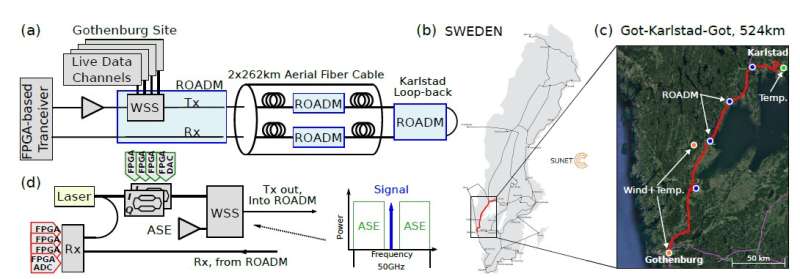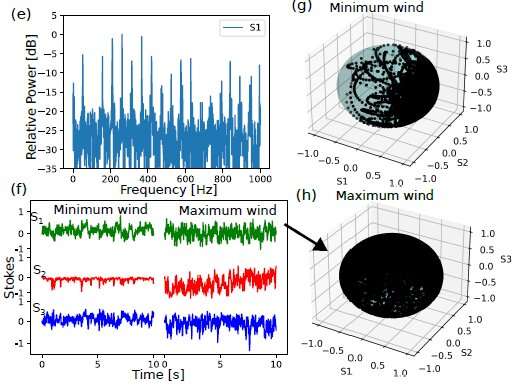
In a new field trial, researchers show that a real-time coherent transceiver prototype can be used for continuous sensing over a 524-km live network aerial fiber wound around high-voltage power cables suspended from outdoor poles.
By monitoring polarization changes in the light traveling through a fiber link, this approach could enable new environmental or current sensing types. It can also be used to improve network integrity by continuously monitoring the health of the fiber link, for example, by detecting increases in fiber length that might indicate a pole is starting to tilt.
Mikael Mazur from Nokia Bell Labs will present the new findings at the Optical Fiber Communication Conference (OFC), which will take place 05—09 March 2023 in San Diego, California, U.S..
“Optical fibers are everywhere, and if we can expand the use of this infrastructure to create a dense worldwide spanning mesh of environmental sensors, these communication systems can play an even bigger role in our daily life,” said Mazur. “Sensing transceivers can prevent service interruption and improve our understanding of the environment by significantly scaling the number of sensors without the cost of a dedicated sensing system. Most importantly, this can be done without any loss in data throughput, enabling full use of the communication system for its intended purpose.”

In the new work, the researchers use a field-programmable gate array coherent transceiver sensing prototype for continuous fiber sensing by using information extracted from coherent digital signal processing (DSP). They used the DSP-based timing recovery module as a time-of-flight sensor.
Using this approach, the researchers continuously monitored a 524-km length of aerial fiber for 70 hours using time-of-flight measurements. They correlated the sensing measurements with temperatures acquired from stations along the network link. The analysis revealed strong oscillations driven by polarization changes over 50 Hz, likely from the Faraday effect induced by the spun fiber. They demonstrated polarization sensing of various wind conditions by filtering out the low-frequency portion of these polarization changes. The results show that coherent transceivers could potentially be used to perform continuous sensing over aerial fibers, making it possible to perform both environmental and network sensing using existing aerial fibers.
“We are just scratching the surface of potential applications and will continues to perform field trials over various networks in different environments,” said Mazur. “Our goal is to better understand how this sensor can be used in future smart cities to improve the resilience of both communication systems and infrastructure, while getting a better understanding of the environment around us. We are also actively looking at algorithms for real-time analytics and autonomous decision-making based on transceiver sensing data, enabling early-warning applications.”
More information: The 2023 Optical Fiber Communication Conference (OFC): www.ofcconference.org/en-us/home/about/
Provided by Optica

